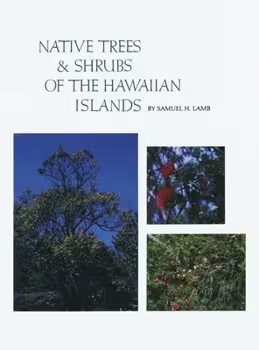Samuel H. Lamb’s “Native Trees and Shrubs of the Hawaiian Islands: An Extensive Study Guide” is a commendable, if somewhat dry, taxonomic and ethnobotanical exploration of the woody flora that defines much of Hawaii’s unique natural heritage. It stands as a valuable resource for both the serious botanist and the culturally attuned naturalist, though its academic tone may prove challenging for casual readers.
Lamb’s strength lies in his meticulous attention to detail. The book provides comprehensive descriptions of each species, encompassing key morphological characteristics, habitat preferences, and geographical distributions. This level of detail is invaluable for accurate identification and taxonomic research.
The inclusion of ethnobotanical information is a significant asset. Lamb delves into the traditional uses of these plants within Hawaiian culture, highlighting their roles in medicine, crafts, and daily life. This cultural context adds depth to the botanical descriptions, transforming the book from a mere species inventory into a valuable resource for understanding the interconnectedness of nature and human society in Hawaii.
However, the book’s format and language are decidedly academic. It is structured as a study guide, with detailed descriptions and technical terminology that may prove daunting for those without a background in botany. The absence of vibrant photographs or illustrations further diminishes its accessibility for a general audience.
Furthermore, the book’s focus on native species, while commendable, limits its scope. It largely neglects the introduced trees and shrubs that have become integral parts of Hawaiian landscapes. While this focus aligns with the book’s title, it creates an incomplete picture of the region’s woody flora.
The book’s organization, while logical, can be somewhat cumbersome. The sheer volume of information presented can be overwhelming at times, particularly for those unfamiliar with botanical nomenclature. A more streamlined approach, with clearer headings and subheadings, would enhance the book’s usability.
Lamb’s writing style, while authoritative and precise, lacks the narrative flair that can transform a botanical study into a captivating read. It is functional and informative, but it lacks the evocative language that would truly inspire and engage readers.
The book’s age is also a consideration. While Lamb’s taxonomic work remains largely valid, some of the nomenclature and classification systems have been updated since its publication. Recent advancements in botanical research and changes in species distribution may render some of the information outdated.
In conclusion, “Native Trees and Shrubs of the Hawaiian Islands” is a valuable taxonomic and ethnobotanical resource for those seeking a detailed understanding of the region’s woody flora. Its comprehensive descriptions and cultural insights make it a significant contribution to the botanical literature. However, its academic tone, limited visual presentation, and somewhat dated information may limit its appeal to a specialized audience. While it remains a valuable resource for researchers and serious botanists, it is ultimately a specialized work intended for a specialized readership.





Reviews
There are no reviews yet.